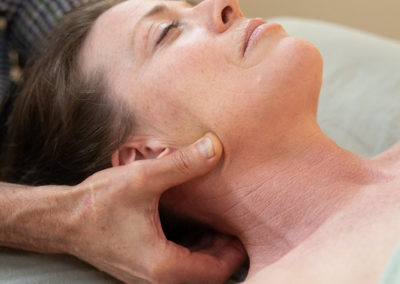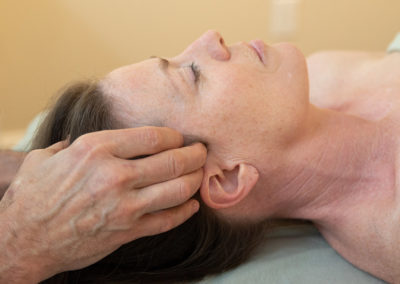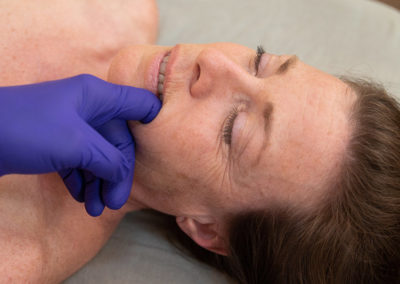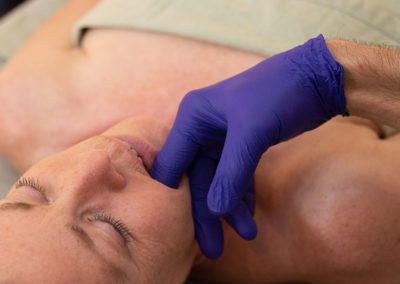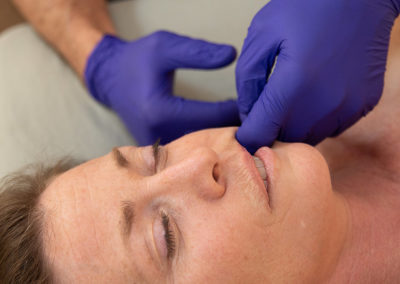What is TMJ Dysfunction and Related Jaw Pain?
$120 per 1-Hour Session
Do you hear popping noises or feel cracking when you open or close your jaw? Do you have pain in your facial muscles, teeth, temples or around your ears that you can’t explain? Do you have migraines or headaches that you can’t explain? The problem may be in the muscles of your temporomandibular joint (TMJ).
I have proven treatments to reduce and free you from the pain.
Causes of TMJ D and Related Facial Pain
There are a number of causes of TMJ Dysfunction and jaw pain. Trauma and stress, such as falls or other impacts are obvious causes, but postural alignment can actually be the key to permanent relief.
During your initial evaluation, I will not only consider your jaw alignment but your head, neck and full body alignment.
Another consideration is having your bite alignment checked by your dentist. Misaligned teeth that cause the jaw to close unevenly is often the cause of TMJ dysfunction. However, please be aware that even after bite alignment is achieved, the muscle structure in your jaw and face may need to be treated by a skilled muscular therapist before the pain is completely relieved.
I have successfully treated this condition for many clients.
Anatomical Details of TMJ Dysfunction
Limited mouth opening (tismus) or locking, popping and pain can all be caused by a spasm of the lateral pterygoid muscle. This muscle attaches to the disc or small pad between the maxilla, or upper jaw, and the condyle of the mandible, the lower jaw, creating a sliding hinge joint. Once the lateral pterygoid muscle is in spasm, then the condyle of the mandible either gets stuck in front of or behind the disc. Popping happens when the lower jaw pops over the disc. Left unattended, this can eventually tear the ligaments at this joint and possibly inflame the muscle. Ouch! At that point, the rest of the jaw muscles start to “splint” in order to stabilize and protect themselves from the pain, causing more problems.
Pain Relief Techniques for Jaw Pain and TMJD
We’ll begin with a full assessment that involves my touching your jaw and head lightly while asking for your feedback. This helps me assess the tension levels in the jaw. I will also watch you slowly open and close your mouth. Here I’m looking for balanced, even movement. This process will tell me the likely source of the pain and dysfunction.
The treatment is myofascial release, for which I use a slow medium-pressure touch to stretch and release minor adhesions or stuck spots. This may include the head, jaw muscles that extend around your temples, and the back of the jaw just in front of your ears.
Specific spots may be found within your muscles that refer pain to a location other than where I am pressing. These are called trigger points. I am trained in a neuromuscular therapy technique that uses mild pressure to block the nervous system loop that refers the pain or locks up the muscle. This treatment is often repeated with four-to-five-minute intervals between contacts to the “trigger point.”
In addition to the exterior muscles of the jaw, I will often need to treat muscles inside your mouth. While wearing non-allergenic rubber gloves, a light fingertip pressure is used on locations on either side of your molars (back teeth).
Releasing spasms and causes of referred pain is essential to my practice. My technique has been refined by extensive experience and my intentionally developed sensitivity.
Don’t suffer. Call 802-730-4955 for a free consultation.

